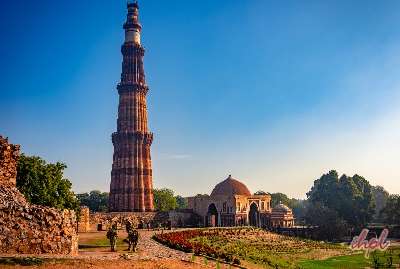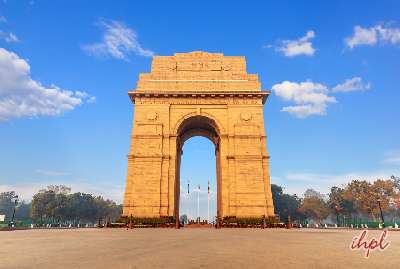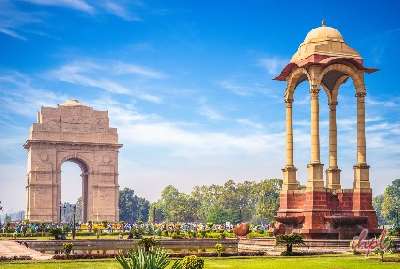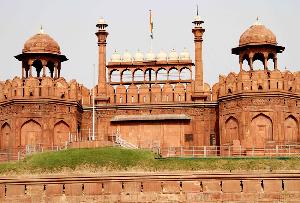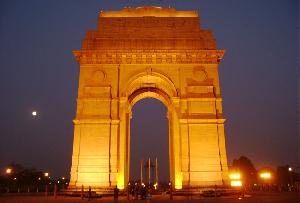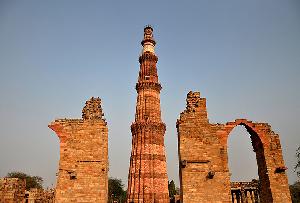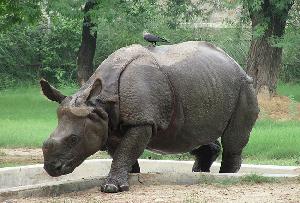A historian’s paradise, Delhi is home to a phase of history that speaks out from every nook and corner of the ancient city. The memories of the glorious age of the Mughal rulers is still alive in the city, with most of their architectural glories still standing as witnesses of the era gone by. One of these is the UNESCO World Heritage Site Red Fort or the Laal Quila.One of the most symbolic features of the Indian capital. Built by the Mughal emperor Shah Jahan around 1638 and 1648, the Red Fort today is a busy market-place, a remembrance of Old Delhi. The Red Fort is also the site of India’s national celebrations on the 15th of August, India’s Independence Day.
History:
A testimony of the glorious Mughal influence on India, the Red Fort in Delhi is today is one of the important tourist attractions. The Fort, which was built by the architectural monarch Shah Jahan in 1648, was started in 1639, after which Shah Jahan changed the Mughal capital from Agra to Delhi. The inauguration of the Fort was in itself an occasion to remember with the main halls of the Fort being draped in rich fabrics brought in from fellow trading countries like China and Turkey. Designed by the renowned Mughal architects, Ustad Hamid and Ahmad, the Fort, brings to alive even today, the life of the people of the era.
Even today a visit to the Red Fort conjures images of the lives within the red sandstone walls during the golden age of the Mughals. The main point of entry, the Lahore Gate leads to the Chatta Chowk where the royalty shopped for exquisite jewelry, luxurious fabrics and other delicate artistry, where the sounds of the royal band echoes even to this day. The Meena Bazaar, one of the oldest bazaars in the world today, provides the visitors to the fort with a glimpse of the life of the commoners of the period. The elegance and regality of the Red Fort also made it one of the most coveted aspects of a conquest of India in the eyes of foreigners like Nadir Shah, who conquered the fort in 1739, depriving the Fort of a number of its treasures, including the pride of the Mughal Empire, the Peacock Throne.
Checkout: Delhi Tour Packages
Structures in Red Fort
Resplendent in her grandeur, the Red Fort is one of the most important symbols of not just India’s history but also one of her greatest prides, her democracy. The Fort, built in red sandstone and one of the most prominent architectural masterpieces of the Mughal era. The medieval complex comprising of a number of palaces, offices, workshops, halls, mosques as well as market places. Built around an area of 120 acres, this UNESCO certified world heritage site consists of: The Diwan-i-Khas or the Hall of Private Audience Perhaps the pride of the Red Fort, the Diwan-i-Khas is today just a pale reminder of its glorious past. Decorated with precious and semi-precious stones, this was the court of the Mughal Emperor where he sat in conference with the ministers of his council. It was the former home of the heavily ornamented Peacock Throne. The Diwan-i-Amn or the Hall of Public Audience It is the court in which the emperor addressed the pleas of his citizens. The rectangular hall has three aisles and nine multiple arches, which housed the royal throne beneath a marble canopy decorated with precious stones and floral motifs. The Rang Mahal (Palace of Colors) or the Imtiaz Mahal Consisting of six apartments divided by arched pillars constructed in a typically Mughal style of architecture, this beautiful palace is built over a basement that in turn is built around a main hall with rooms at each end.The Khas Mahal (Private Palace)
The emperor’s personal palace, this exotic structure consisted of the following chambers:- The Taasbikhana (Chamber of Telling Beads)
- The Khwabgah (Sleeping Chamber)
- Baithak (Sitting Room)
- Muthamman Burj or Jharokah-i-Darshan (Showing Balcony)
- The Moti Masjid or the Pearl Mosque
- The Hayat-Baksh Bagh or the Life-giving Garden
- Zafar Mahal
- The Hamam or the Bath




